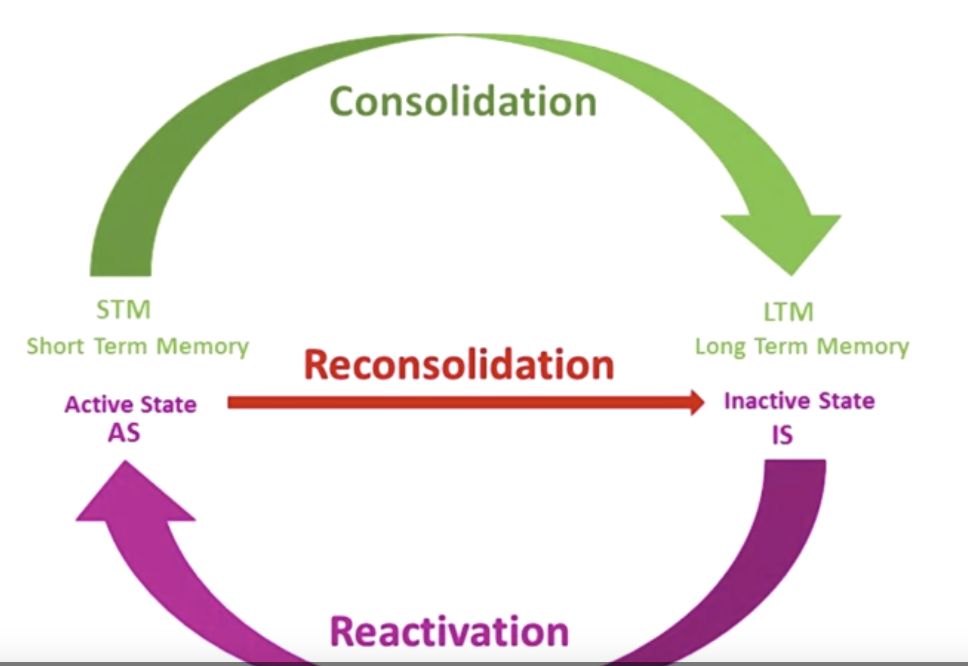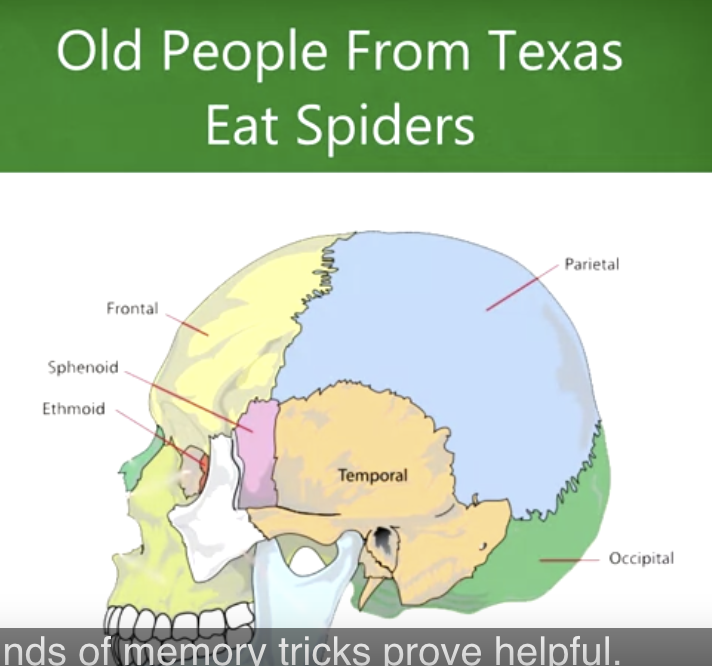Week 3 - Course Notes - Procrastination and Memory
Course: Learning how to learn by Dr. Barbara Oakley, Dr. Terrence Sejnowski Course claim: Learn more effectively and with less frustration
Become the master of my learning habits.
Procrastination and memory
As efficient learning relies on focussed learning bit by bit and avoid cramming knowledge, it becomes very important to avoid procrastination. Otherwise procrastination would undermine learning progress for each bit.
Procrastination is easy to come by versus willpower is very hard. Willpower uses a lot of neural resources.
The pain relieving chain of procrastination
Feeling unhappy (about the topic and learning that topic) ➡ funnel attention onto a more pleasant task ➡ feel happy (temporarily). It shares features of addiction.
Understanding procrastination
Chunking is building a learning habit. Chunking is an energy saver (actually building a second brain is an energy saver in the longer run too).
Understanding Habits
- The cue - trigger for that habit. Mainly from the 4 categories
- location
- time
- how you feel
- reactions
- The routine - the habit mode that you fall into after the cue
- The reward - an immediate little feeling of pleasure
- The belief - habit has power, because you belief in them. To change a habit, you need to change the underlying belief
Because of the easy to gain (short term) reward from procrastination, we fall into that habit fast. Also cues are many too - a text message, another article, a door bell ring,…)
Further resources on habits [[Atomic Habits - James Clear]] and [[S01 Personal/030-039 Areas/Permanent notes/Hooked/Hooked|Hooked]]
Beating procrastination
- find ways to reward good study habits (to fix the reward aspect of forming a habit)
- put negative feelings aside … e.g. telling yourself: Get on with it, once you get going I’ll feel better soon
-
focus on process (flow of time) not product (outcome to create). Like riding a wave - be focussed on the moment and the process of riding.
- Pomodoro - just 25’ focussed work
- Process also removes judging
- set yourself up with minimal distractions
- work with weekly and daily tasks
- embed small challenges each day - arrange work into a series of small challenges
- deliberately delay rewards until you finish a task
Focus on process
Process means flow of time and habits & actions associated with that flow of time. E.g. I’m gonna spent 20’ of working.
Product is an outcome, eg. a homework to finish. Thinking about the product causes the pain that triggers procrastination.
Focus on processes. These are simple habits. The small chunks of time to progress in your journey towards the product.
Change a habit
Look for ways to change the reaction to a cue (trigger). What is launching me into procrastination mode?
Fixing the Cue
Set yourself up with minimal distractions. Avoids cues to trigger.
Key to rewiring is to have a plan.
- E.g. leave a phone away.
- Set yourself in a quiet space
Leverage the Rewards
Investigate Reward - why am I procrastinating? Replace with a new reward e.g.
- a sense of satisfaction
- a small win by reaching an outcome
- win a small internal bet
- bigger reward for a bigger achievement
Set a new belief
- belief that the new system works
- develop a new community - developing an encouraging culture that supports each other
Juggling learning and live
Write a weekly list of key tasks and work with a daily todo list of what you want to accomplish today.
Write the next days todo list the evening before. This activates the subconscious brain to already grapple with the tasks.
With writing down the tasks, you free up scarce working memory (that you can then use to focus even more on the learning/task at hand).
- make them small and achievable
- allow for slack time (as there will be interruptions throughout the day)
- mix with other type tasks that also bring further rewarding and fun moments in the learning journey
- plan your quitting time
- maintain healthy leisure time
Eat your frogs early in the morning. 🐸 🌞
Learn over time, what size and specifics of a task is working.
- Link with rich set of procrastination mastery tools from Blinkist (Carl Newport)
- Start to embed Pomodorro
- Work on my procrastination habit - what is the cue?
Diving deeper into memory
Our mind is made for holding general information about a place for a longer time. Tab into natural memory capabilities enhances learning.
Humans have a great: “Where things are” and “How they look” memory.
- Images connect to right brain’s visual spacial centers.
- the funnier and evocative and image, the better
In order to bring an idea from working memory to long term memory it must be:
-
memorable (e.g. connected with a picture)
- writing and saying enhances learning e.g. use index card
- try to feel the concept (e.g. feel that mass)
- repeated - sporadically over several days
Working with index cards
- writing main learning on one side
- write more details on flip-side
- add visuals
- work with a card and speak out loud
- work with a deck of card and learn. This activates interleaving
- take breaks an later on take cards out again … repeat gradually and increase space between repetition over time
What is long term memory
Memory consolidation and properly storing into long term memory can take many years. So memory is living and changing over time and not fixed.
With recall it changes, a reconsolidation occurs. Memory systems are intertwined. As we learn new things, our long term memory also changes.
Flow between working memory and long term memory via consolidation, reconsolidation and reactivation

Astrocytes provide nutrients to neurons, maintain ion balance and are involved in repair after injury.
The memory palace technique and further memory tweaks
Example - try to memorize the incredients Garlic, Rose, Hawthorn, Mustard.
- first letters GRHM
- connect with an image for a GRAHAM cracker
Connect numbers with:
- a relative number you can easily remember e.g. 11s for 100 sprint
- connect with events, like a birthday
- connect with a feeling of a certain age - e.g. 18
Connect lists to learn with sentences where each word in the sentence starts with the first letter from a list item.
Old people from texas eat spiders. As pointers to Occipital, Frontal, Temporal, Ethmodn, Sphenoid

The Memory Palace in detail
Memory palace is a powerful group technique for things to remember. It is useful for remembering unrelated items (e.g. grocery list).
- It speeds up acquisition of chunks
- big picture templates help storing
- extend working memory by creating an easier access to long term memory
- using this memory technique also fosters creativity (as e.g. creating these images is already building new connections and associations)
Living room for storing concepts

- Call out a familiar place and its layout. E.g your house layout.
- Use it as a visual notepad, where you can deposit concept images to remember.
- Make the concept images funny when you connect them to a place. E.g. a huge bread that you put on your table in the dining room (to remember bread).
- then imagine walking through the place and pick up the items
Interviews
Interview with Nelson Dellis - Memory champion and athlete
- His exceptional memory system is trained and was not given to him by birth.
- Is replacing numbers with pictures. As pictures are more familiar to our brain, we can memorize pictures better.
- core component of memorizing techniques
- memorization - turn something to memorize into a mental picture that means something to me
- the picture can be anything
- attach that picture to a location (e.g. in your memory palace)
- for free speeches
- memorize keywords
- for names
- pay attention
- use a distinguishing feature to store - e.g. a face part, something special. And connect to something this person is remembering you
- extremememorychallenge.com
Brain Health - 4 important incredients
-
keep my brain active
- Try to memorize things
- Learn new skills
- be physically active
- be social and involve myself with friends and community
-
diet - things we eat impact our brain too
- Omega 3
Interview with Dr. Robert Gamache - Bilingual Scientist
- Study every subject every day - so using it all the time, it is right there in our brains and we can recall that much more easily
- repetition hard wires our brain
- when getting stuck - take a break and relax a bit, do some small activities like bouncing a ball or sleep over it
- being with family - is also helping with relaxing and getting back later being much more productive
- the art of being a professor is in choosing the examples that explain things in a easy to digest way.
Interview with Dr. Keith Devlin - the Math Guy
[[Introduction to Mathematical Thinking - Keith J Devlin]]
Question to look at, when trying to solve a problem
- What are you trying to do?
- What do you want to achieve?
- What information do you have?
Familiarise with a problem so deep as if that becomes a member of your family. Then our brain capabilities of solving real world, day-2-day problems will do its magic.
Live inside that problem.
Solving a problem is a journey
1) Does an existing technique work? 2) Can I adapt an existing technique? 3) If nothing know helps .. go away from the problem and focus on something else … the come back to it. Fresh eye.
So focus and diffuse brain mode at play.
Works very intensily and focussed on one topic at a time. And got very efficient at switching between topics.
Cliff Nass worked a lot on research about multitasking.